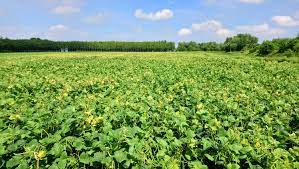Published originally here on July 1st, 2022
Anne Elise Stratton, Jucinei José Comin, Ilyas Siddique, Donald R Zak, Letícia Dambroz Filipini, Renata Rodrigues Lucas, Jennifer Blesh
Abstract
The impacts of crop diversity on ecosystem functioning can vary across environmental conditions and land use histories. We conducted a two-year experiment to assess the effects of two diversification practices—vetch-oat cover cropping and cucumber-snow pea intercropping—on nitrogen (N) cycling and productivity across a farm management gradient. The field experiment spanned 14 farms in southern Brazil with different long-term management histories, ranging from conventional tobacco to agroecological mixed crop-livestock systems. Along this gradient, farm soils with longer histories of agroecological management had higher soil organic carbon, potentially mineralizable carbon, and extractable phosphorus, captured by a principal component reflecting “biological soil fertility.” We found that benefits of diversification practices for soil N cycling and productivity were ecologically relevant across the farm gradient within the two-year span of our experiment, with the greatest overall performance on agroecological farms. First, vetch-oat cover crops doubled mean N inputs to soil compared to fallows across all farms. Following cover crop incorporation, N mineralization was twice as high on agroecological farms as on transitioning or conventional farms. At vegetable planting, use of cover crop mixtures explained 67% of the variation in soil N availability, after accounting for the effects of background fertility. Finally, vegetable intercrops had higher productivity than monocrops across farms and years (mean LER=1.19), with stronger overyielding in the second year (mean LER=1.27). On a subset of farms, low soil pH constrained the performance of both diversification practices, reducing vetch N2 fixation and vegetable intercrop yield (Land Equivalent Ratio, LER). While prior research has emphasized facilitation between diversified crops in lower fertility soils, our results suggest that diversification’s advantages for nutrient cycling and productivity are robust to varied soil conditions and accrue over the course of transitions to agroecological management.



